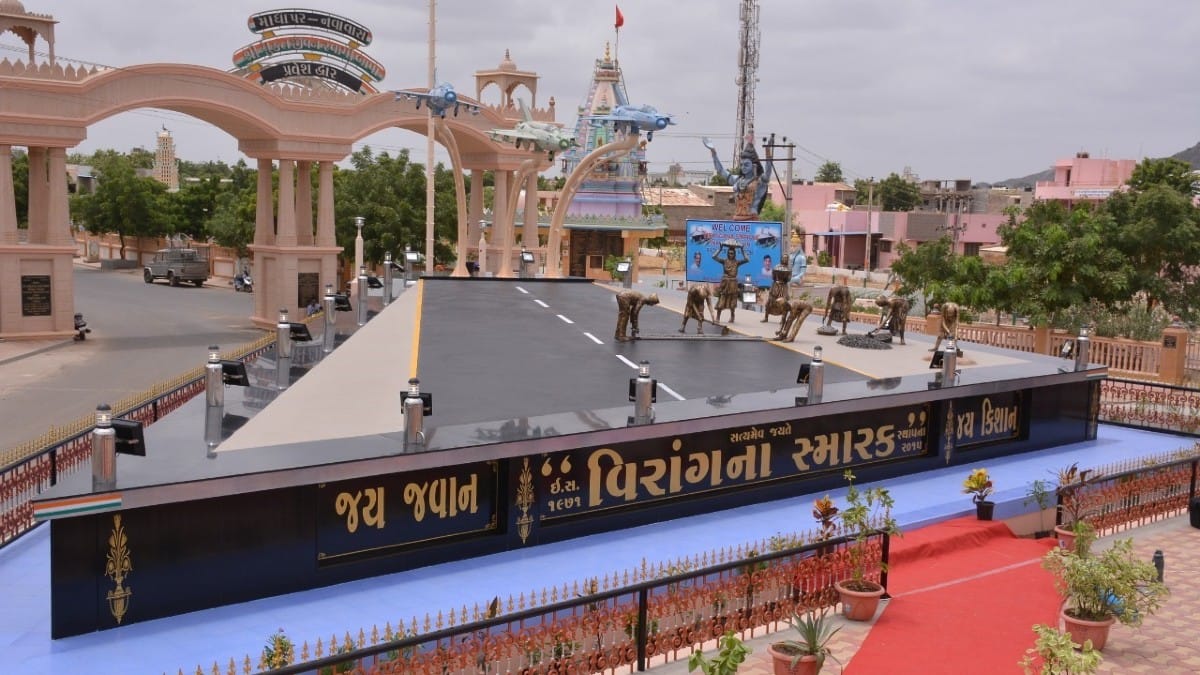Kachchh: Octogenarian Kanbai Shivji Hirani was scrolling through YouTube reels when she stumbled upon a video suggesting Pakistani drones had entered Indian airspace at Bhuj. For the 80-year-old, it took her back to the last time she found herself on the frontline.
It had been more than 50 years, but Hirani remembered every minute detail like it was yesterday—the sirens, blackouts, and explosions.
She picked up the phone and called her friends Samuben Vishram Banderi and Shaambhai Khokhani. The three of them had lived through the 1971 War when Pakistani jets bombed the Bhuj airstrip, rendering it unusable.
They weren’t soldiers; merely young women from Madhapar village. But when the administration came asking for help, they agreed without a second’s hesitation.
Last week, the three women met again—over a cup of tea. “Will you go again if the government asks us?” Hirani asked, wearing a grin.
“I’ll go happily,” replied Banderi. “And I’ll bring the younger generation with me too.”

On the night of 8 December, 1971, a Pakistan Air Force (PAF) squadron dropped 64 bombs on the Indian Air Force (IAF) airstrip in Gujarat’s Bhuj. Eight planes were damaged and the entire runway rendered unusable. Initially, the government enlisted the services of a contractor to repair the runway, but he said it would take six months.
“Then our collector came to our sarpanch and asked if the locals could help,” recalled Hirani. “Our sarpanch asked us, and we said, ‘we’ll do everything for our country’.”
On the first day, around 70–80 villagers came forward. By the second day, there were more than 300—mostly women. “We worked from 7 am to 7 pm for three days,” said Banderi.
Adding, “There were more than 22 craters on the runway due to the bombing. We left our children at home. My in-laws were scared, but the love for my country was running in my veins. I didn’t care about anything else—I just wanted to finish the task for our forces.”
The women were told to hide when the first siren rang out, and to come out and resume work when a second siren was sounded. They wore green sarees to avoid being spotted by enemy planes. “We were a little fearful,” Banderi said, “but it did not stop us.”
The women’s efforts paid off. Within 72 hours, the runway was ready. Local villagers who pitched in were awarded Rs 50,000 by the government. But instead of keeping it, they donated it to build a panchayat ghar at the entrance of the village.
They named it Veerangana Bhavan.
Today, the entry to Madhapar village is marked by a huge replica showing these women working on the runway, filling bomb craters with their bare hands. At the base of the statue, the words ‘Veerangana Smarak’ are inscribed in Gujarati in golden letters.
It tells the story of courage—of women who were never trained to fight, but who showed up when the nation needed them most.

“Not many of us are alive now,” said Hirani. “But kids still come to us to hear about that war. This new operation, what they’re calling Operation Sindoor, has brought our stories back again.”
For instance, 12-year-old Sagar came to see these women four times in two days. He asked them the same questions each time: “How many bombs did you see? Were there missiles or drones? Were blackouts the same in 1971? How did you rebuild the runway so fast?”
The women never get tired of answering. “I answer all his questions patiently,” said Hirani. “We teach the young generation to love their country. That’s our duty now.”
The white wall of Hirani’s house is covered in certificates and awards. At 80, she’s passing those memories on to the next generation, one story at a time.
“The earlier blackout was very dangerous. Pakistan used to leave the bombs and kept roaming around over our heads. We used to hide in the bushes when the siren used to begin. We used to be a little fearful but it did not stop us,” recalls Banderi. “When a Pakistani plane would come, a siren would be sounded to make us hide. We all used to do the same. We were working to save Bharat Maa by putting our lives at risk,” she added.
(Edited by Amrtansh Arora)
Also Read: In J&K’s Samba, hundreds of livestock killed, livelihoods snuffed out by cross-border shelling






